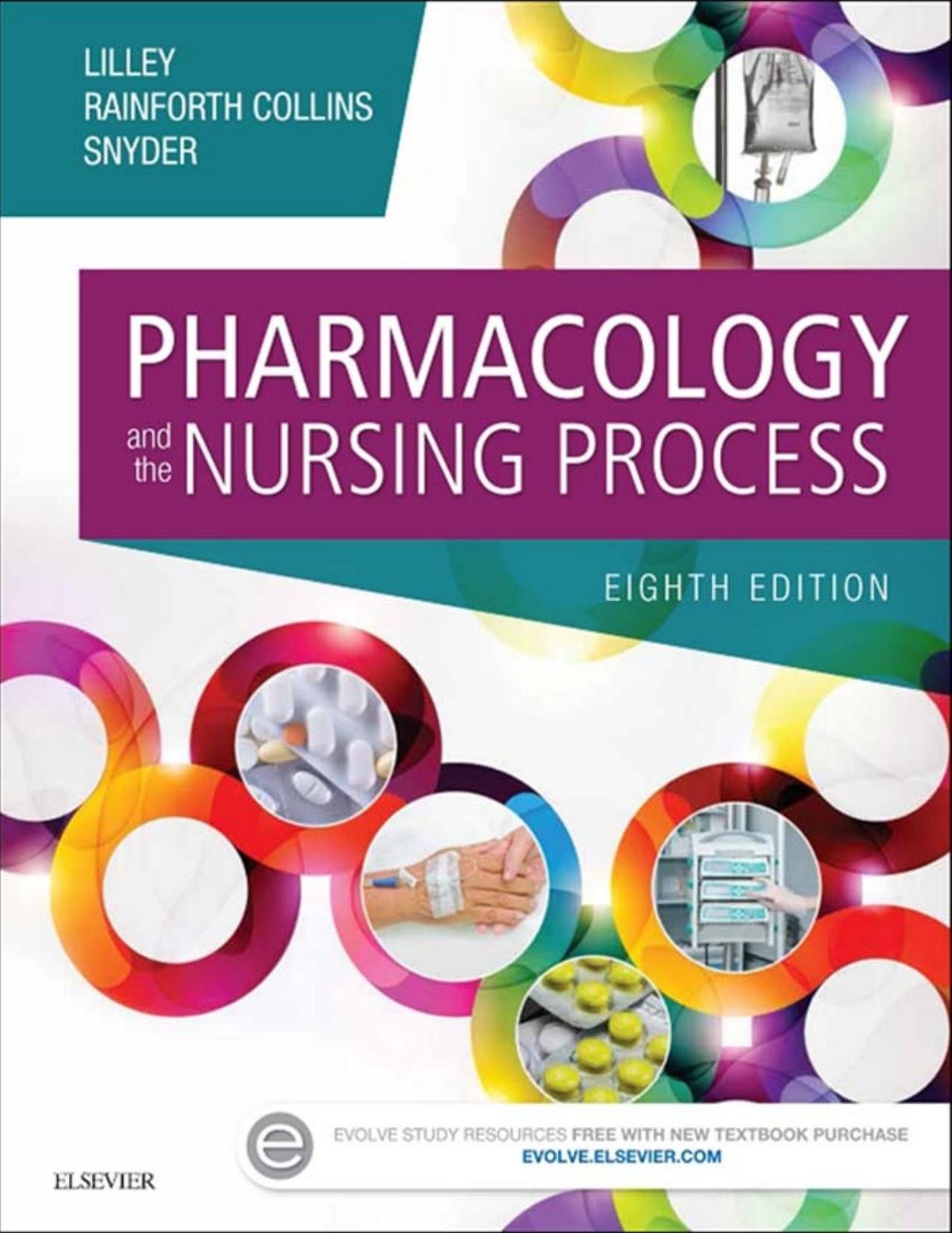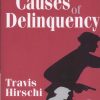Pharmacology and the Nursing Process 8th edition by Linda Lane Lilley, Shelly Rainforth Collins, Julie Snyder 0323358284 9780323358286
$70.00 Original price was: $70.00.$35.00Current price is: $35.00.
Instant download Pharmacology and the Nursing Process after payment
Pharmacology and the Nursing Process 8th edition by Linda Lane Lilley, Shelly Rainforth Collins, Julie Snyder – Ebook PDF Instant Download/Delivery: 0323358284, 9780323358286
Full dowload Pharmacology and the Nursing Process 8th edition after payment

Product details:
ISBN 10: 0323358284
ISBN 13: 9780323358286
Author: Linda Lane Lilley, Shelly Rainforth Collins, Julie S Snyder
Let this exceptional pharmacology text guide you in safely and effectively administering medications! Now in its eighth edition, Pharmacology and the Nursing Process continues to provide nursing students with the essential pharmacology knowledge, prioritization techniques, and nursing process information they need. Focusing on a unique key drug approach, this text delivers only the critical drug information necessary for safe administration.
The book emphasizes the nursing process and prioritization, covering essential assessments, nursing diagnoses, interventions, and evaluations for effective practice. This edition includes expanded coverage of QSEN competencies, clearer language, and numerous reader-friendly features and innovative learning aids. With integrated NCLEX preparation and valuable learning strategies, you won’t find a more comprehensive pharmacology resource available!
New Features Include:
- Enhanced QSEN coverage with relevant information throughout, including applicable competencies in case studies.
- Improved readability with a more direct, approachable language and shorter sentences.
- An extensive Photo Atlas of Drug Administration with over 100 detailed illustrations demonstrating key steps for various routes of administration.
- A unique QSEN focus highlighting related content, such as boxes, tips, and case studies.
- A popular key drug approach that concentrates on essential knowledge for safe clinical practice, outlining common and serious adverse effects.
The integrated NCLEX Examination preparation includes review questions in each chapter, ensuring thorough application of the nursing process. A colorful, learner-friendly format uses practical organization to connect pharmacology with medical-surgical and adult health nursing coursework. The focus on prioritization links nursing diagnoses to corresponding goals and outcomes.
Additionally, the text includes a wealth of learning aids, such as:
- Cartoon-illustrated learning strategies for studying and test-taking tips.
- Drug profiles for commonly-used agents.
- Engaging case studies to promote critical thinking.
- Dosage tables for quick reference.
- Key point summaries for essential pharmacology and nursing concepts.
With over 250 full-color illustrations, the text effectively demonstrates how drugs interact within the body and guides safe medication administration. Updated learning strategies incorporate technology and active learning, while new icons highlight high-alert drugs and key medications.
For medical students, utilizing recommended textbooks is crucial for grasping new concepts in pharmacology. One highly regarded textbook is Pharmacology and the Nursing Process by Linda Lane Lilley, Shelly Rainforth Collins, and Julie S. Snyder. Published by Mosby, the eighth edition (2015) is a revised version, incorporating the latest insights and references from previous editions, and serves as an update to the seventh edition.
With over 900 pages of in-depth content, this textbook is ranked among the top medical resources and is particularly prominent in nursing and pharmacology courses. Available for rent or purchase through Chegg, this edition is popular, reflecting its efficacy in the field.
If you need this textbook for your course, finding it at a discounted price can significantly affect your budget for additional school expenses. The original price of Pharmacology and the Nursing Process, 8th Edition is approximately $114, but Chegg offers rental and purchase options at reduced prices, helping you save on your educational materials.
Students interested in this edition may also want to look into the upcoming Pharmacology and the Nursing Process, 9th Edition as a potential replacement text.
Pharmacology and the Nursing Process 8th Table of contents:
PART 1: PHARMACOLOGY BASICS
Learning Strategies: Introduction to Student Learning Strategies for Pharmacology
1. The Nursing Process and Drug Therapy
2. Pharmacologic Principles
3. Lifespan Considerations
4. Cultural, Legal, and Ethical Considerations
5. Medication Errors: Preventing and Responding
6. Patient Education and Drug Therapy
7. Over-the-Counter Drugs and Herbal and Dietary Supplements
8. Gene Therapy and Pharmacogenomics
9. Photo Atlas of Drug Administration
PART 2: DRUGS AFFECTING THE CENTRAL NERVOUS SYSTEM
Learning Strategies: Nursing Process, Assessment, Nursing Diagnoses, and Evaluation
10. Analgesic Drugs
11. General and Local Anesthetics
12. Central Nervous System Depressants and Muscle Relaxants
13. Central Nervous System Stimulants and Related Drugs
14. Antiepileptic Drugs
15. Antiparkinson Drugs
16. Psychotherapeutic Drugs
17. Substance Abuse
PART 3: DRUGS AFFECTING THE AUTONOMIC NERVOUS SYSTEM
Learning Strategies: Reading: Vocabulary, Text Notation, and Enhanced Typeface
18. Adrenergic Drugs
19. Adrenergic-Blocking Drugs
20. Cholinergic Drugs
21. Cholinergic-Blocking Drugs
PART 4: DRUGS AFFECTING THE CARDIOVASCULAR AND RENAL SYSTEMS
Learning Strategies: Study Time: Learning Styles, The Use of Apps, Mnemonics, Flash Cards
22. Antihypertensive Drugs
23. Antianginal Drugs
24. Heart Failure Drugs
25. Antidysrhythmic Drugs
26. Coagulation Modifier Drugs
27. Antilipemic Drugs
28. Diuretic Drugs
29. Fluids and Electrolytes
PART 5: DRUGS AFFECTING THE ENDOCRINE AND REPRODUCTIVE SYSTEMS
Learning Strategies: Making the Most of Group Studying: Study Groups, Chat Rooms, Discussion Groups
30. Pituitary Drugs
31. Thyroid and Antithyroid Drugs
32. Antidiabetic Drugs
33. Adrenal Drugs
34. Women’s Health Drugs
35. Men’s Health Drugs
PART 6: DRUGS AFFECTING THE RESPIRATORY SYSTEM
Learning Strategies: Time Management and Practice Questions
36. Antihistamines, Decongestants, Antitussives, and Expectorants
37. Respiratory Drugs
PART 7: ANTIINFECTIVE AND ANTIINFLAMMATORY DRUGS
Learning Strategies: Performance Evaluation and Improvement, NCLEX Practice
38. Antibiotics Part 1
39. Antibiotics Part 2
40. Antiviral Drugs
41. Antitubercular Drugs
42. Antifungal Drugs
43. Antimalarial, Antiprotozoal, and Anthelmintic Drugs
44. Antiinflammatory and Antigout Drugs
PART 8: CHEMOTHERAPEUTIC DRUGS AND BIOLOGIC AND IMMUNE MODIFIERS
Learning Strategies: Application of Pharmacology and Making Connections
45. Antineoplastic Drugs Part 1: Cancer Overview and Cell Cycle–Specific Drugs
46. Antineoplastic Drugs Part 2: Cell Cycle–Nonspecific Drugs and Miscellaneous Drugs
47. Biologic Response–Modifying and Antirheumatic Drugs
48. Immunosuppressant Drugs
49. Immunizing Drugs
PART 9: DRUGS AFFECTING THE GASTROINTESTINAL SYSTEM AND NUTRITION
Learning Strategies: Active Questioning, Studying for Tests, and Test Taking Strategies
50. Acid-Controlling Drugs
51. Bowel Disorder Drugs
52. Antiemetic and Antinausea Drugs
53. Vitamins and Minerals
54. Anemia Drugs
55. Nutritional Supplements
PART 10: DERMATOLOGIC, OPHTHALMIC, AND OTIC DRUGS
Learning Strategies: Future Application
56. Dermatologic Drugs
57. Ophthalmic Drugs
58. Otic Drugs
People also search for Pharmacology and the Nursing Process 8th:
introduction to nursing pharmacology
chapter 8 pharmacology and pharmacy
pharmacology and the nursing process study guide
pharmacology and the nursing process study guide pdf


